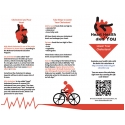Whew! It has been a whirlwind of a year, with lots of news and controversy rocking the health scene. Let's take a moment to sit back, take a breath, and review the nutrition highlights of 2013.Healthful Snacks in Schools: This year, the USDA set up nutrient guidelines for food items sold at schools. Basically, these guidelines covered calorie limits, sugar caps, and nutrient requirements. All snacks, including extras like butter and cream cheese, are now required to have no more than 200 calories per serving. Fat must make up no more than 35% of the total calorie count, with saturated fat content at less than 10% and trans fat content at 0. Moreover, only 35% (or less) of the weight in any snack food may come from sugar. The last factor in the healthful snack push comes in the form of nutrient requirements. In order to meet the USDA’s guidelines, school snacks must now either be rich in whole grains, contain at least a quarter cup of fruit and/or vegetables, have a fruit, vegetable, protein food, or dairy product as the first ingredient, or contain 10% or more of the percent daily value of potassium, dietary fiber, vitamin D, or calcium.Healthful School Snacking Resources: When it comes to understanding and aligning with the new USDA school snack rules, there are lots of great resources out there. Some of the most popular ones are below...
School Breakfast and Lunch Rules: Let's not leave the schoolroom just yet. There were even more upheavals in the realm of school breakfasts and lunches this year. The Nutritional Standards in the National School Lunch Program required most schools to increase availability of fruits, vegetables, and whole grains, along with fat-free and low-fat fluid milk. Schools were also required to reduce the levels of sodium, saturated fat, and trans fat in meals while meeting nutrition needs within set calorie requirements. These improvements to the school meal programs, largely based on recommendations from the Institute of Medicine of the National Academies, were and are expected to enhance the diet and health of schoolchildren. The National School Lunch Offer Versus Serve Program, which has reimbursable credits, requires schools to offer a certain number of food groups. The kids must make at least the minimum choices from them for breakfast or lunch each day. To meet the new lunch requirements, kids now have to choose items from 3 of 5 food groups, and one of those has to be a fruit or vegetable.School Breakfast and Lunch Resources: Whether you're looking to understand, explain, or adhere to the new guidelines, we've got you covered. We spent a good deal of this year researching and creating new school breakfast and lunch videos, posters, handouts, blog posts, and more! Here are some of the most useful options...
New Cardiovascular Disease Risk Guidelines: 2013 was a banner year for publications about heart health and disease risk. This fall, new cardiovascular disease risk guidelines from the American Heart Association (AHA) and the American College of Cardiology (ACC) provided a valuable updated roadmap to help clinicians and patients manage heart disease prevention and treatment challenges. Recommendations included reducing saturated fat, trans fat, and sodium intakes below the levels that most people employ. They also include engaging in physical activity — an average of 40 minutes of moderate to vigorous-intensity aerobic exercise — 3-4 times a week. In addition to the new health risk calculator, the guidelines also identified four major groups of patients for whom cholesterol-lowering HMG-CoA reductase inhibitors, or statins, have the greatest chance of preventing stroke and heart attacks.Resources for Understanding the New Cardiovascular Disease Risk Guidelines: These guidelines can be confusing, and much of the media coverage was controversial. To best understand the changes and implementation of the new guidelines, review the materials below...
New Blood Pressure Guidelines for Older AmericansAccording to recommendations published in the Journal of the American Medical Association (JAMA), fewer older Americans will need to take blood pressure medications. This is a dramatic shift from the older guidelines, which had been in place for the last 30 years.In other words, the report states that older Americans need to bring their blood pressures below 150/90, rather than below 140/90. The latter levels are for people under the age of 60. Here is the article and infographic:
Trans Fat and Your Food: This year, the U.S. Food and Drug Administration (FDA) announced its preliminary determination that partially hydrogenated oils (PHOs) — the primary dietary source of artificial trans fat in processed foods — are not “generally recognized as safe” for use in food. The FDA’s preliminary determination was based on available scientific evidence and the findings of expert scientific panels.Trans Fat Elimination Resources: For everything from press releases to posters, we've got the latest on trans fat below...
MyPlate Turns Two: Can you believe that it has been over two years since MyPlate first came onto the scene? On June 2nd, 2013, MyPlate turned two years old. MyPlate is the USDA's guide to healthful and balanced eating. It replaced the Food Guide Pyramid with an easier visual to help prompt good choices. With 5 food groups -- vegetables, fruits, protein, dairy, and grains -- and an emphasis on portion control, MyPlate is a great guide for healthful eating.MyPlate Resources: Here are a few of the most popular MyPlate resources.
Gluten-Free Labeling Rules: As more and more people adopted gluten-free diets, manufacturers started using "gluten-free" labels to promote sales. This labeling was somewhat helter-skelter, but that all has begun to change this year thanks to new regulations from the FDA. In 2013, the FDA finalized the definition of the term “gluten-free” and began regulating its use on food labels. No longer can manufacturers simply slap that label on their foods without following proper guidelines first. In fact, manufacturers will have only one year to get everything up to speed and comply with the regulations. Remember, these guidelines only apply to FDA-regulated foods and dietary supplements, not to foods labeled by the United States Department of Agriculture (USDA) or the Alcohol and Tobacco Tax and Trade Bureau.Gluten-Free Resources: Understanding and properly treating a gluten intolerance can be difficult, especially with crazy labeling claims and unclear ingredient lists. Get the facts and review valuable tips with the following resources...
Dietary Guidelines for Americans: While the 2015 Dietary Guidelines for Americans (DGA) will not be released until… well… 2015, 2013 was still a banner year in their development. This year marked the start of the meetings about the guidelines, and one has already taken place. The committee is very open about its progress and welcomes questions from the public. Are you excited about these new guidelines? Because we are pretty darn excited.Dietary Guidelines Resources: There are lots of links for anyone who wants to know about past guidelines, guideline updates, and plans for the future guidelines. Check out your favorites below...
Stephanie Ronco has been editing for Food and Health Communications since 2011. She graduated from Colorado College magna cum laude with distinction in Comparative Literature. She was elected a member of Phi Beta Kappa in 2008.
2013 Year in Review: Health and Nutrition Edition
Whew! It has been a whirlwind of a year, with lots of news and controversy rocking the health scene. Let's take a moment to sit back, take a breath, and review the nutrition highlights of 2013. Healthful Snacks in Schools: This year, the USDA set up nutrient guidelines for food items sold at schools. Basically, these guidelines covered calorie limits, sugar caps, and nutrient requirements. All snacks, including extras like butter and cream cheese, are now required to have no more than 200 calories per serving. Fat must make up no more than 35% of the total calorie count, with saturated fat content at less than 10% and trans fat content at 0. Moreover, only 35% (or less) of the weight in any snack food may come from sugar. The last factor in the healthful snack push comes in the form of nutrient requirements. In order to meet the USDA’s guidelines, school snacks must now either be rich in whole grains, contain at least a quarter cup of fruit and/or vegetables, have a fruit, vegetable, protein food, or dairy product as the first ingredient, or contain 10% or more of the percent daily value of potassium, dietary fiber, vitamin D, or calcium.Healthful School Snacking Resources: When it comes to understanding and aligning with the new USDA school snack rules, there are lots of great resources out there. Some of the most popular ones are below...
Healthful Snacks in Schools: This year, the USDA set up nutrient guidelines for food items sold at schools. Basically, these guidelines covered calorie limits, sugar caps, and nutrient requirements. All snacks, including extras like butter and cream cheese, are now required to have no more than 200 calories per serving. Fat must make up no more than 35% of the total calorie count, with saturated fat content at less than 10% and trans fat content at 0. Moreover, only 35% (or less) of the weight in any snack food may come from sugar. The last factor in the healthful snack push comes in the form of nutrient requirements. In order to meet the USDA’s guidelines, school snacks must now either be rich in whole grains, contain at least a quarter cup of fruit and/or vegetables, have a fruit, vegetable, protein food, or dairy product as the first ingredient, or contain 10% or more of the percent daily value of potassium, dietary fiber, vitamin D, or calcium.Healthful School Snacking Resources: When it comes to understanding and aligning with the new USDA school snack rules, there are lots of great resources out there. Some of the most popular ones are below...
New Blood Pressure Guidelines for Older AmericansAccording to recommendations published in the Journal of the American Medical Association (JAMA), fewer older Americans will need to take blood pressure medications. This is a dramatic shift from the older guidelines, which had been in place for the last 30 years.In other words, the report states that older Americans need to bring their blood pressures below 150/90, rather than below 140/90. The latter levels are for people under the age of 60. Here is the article and infographic:
Trans Fat and Your Food: This year, the U.S. Food and Drug Administration (FDA) announced its preliminary determination that partially hydrogenated oils (PHOs) — the primary dietary source of artificial trans fat in processed foods — are not “generally recognized as safe” for use in food. The FDA’s preliminary determination was based on available scientific evidence and the findings of expert scientific panels.Trans Fat Elimination Resources: For everything from press releases to posters, we've got the latest on trans fat below...
Dietary Guidelines for Americans: While the 2015 Dietary Guidelines for Americans (DGA) will not be released until… well… 2015, 2013 was still a banner year in their development. This year marked the start of the meetings about the guidelines, and one has already taken place. The committee is very open about its progress and welcomes questions from the public. Are you excited about these new guidelines? Because we are pretty darn excited.Dietary Guidelines Resources: There are lots of links for anyone who wants to know about past guidelines, guideline updates, and plans for the future guidelines. Check out your favorites below...
Check out over 70 new materials in our store for 2014:





Stephanie Ronco has been editing for Food and Health Communications since 2011. She graduated from Colorado College magna cum laude with distinction in Comparative Literature. She was elected a member of Phi Beta Kappa in 2008.
Holiday Oatmeal Cookies in a Jar
2013 Year in Review